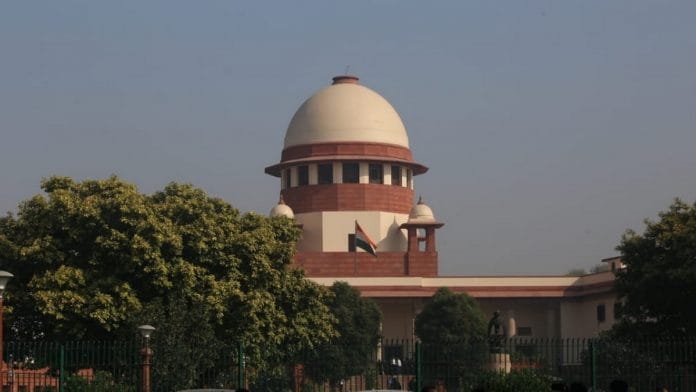New Delhi: The Supreme Court delivered a unanimous verdict Saturday in the Ram Janmabhoomi-Babri Masjid land dispute case. The bench invoked Article 142 of the Constitution to hand over the disputed land to a trust to be formed by the central government in the next three months, under the Acquisition of Certain Area at Ayodhya Act, 1993.
“In exercise of the powers vested in this Court under Article 142 of the Constitution, we direct that in the scheme to be framed by the central government, appropriate representation may be given in the trust or body, to the Nirmohi Akhara in such manner as the central government deems fit,” said the order given by the five-judge bench of CJI Ranjan Gogoi and Justices S.A. Bobde, D.Y. Chandrachud, Ashok Bhushan and S.A. Nazeer.
Follow live updates here
It also cited the provision to direct that Nirmohi Akhara be assigned “an appropriate role” in framing of the scheme for construction of the temple. This was despite the fact that the suit filed by Nirmohi Akhara was held to be barred by limitation.
ThePrint explains the meaning of Article 142 and explores the history of its use by the Supreme Court.
Also read: Govt trust to get disputed Ayodhya site for Ram Mandir, Muslims to get another plot: SC
What does Article 142 state?
Article 142 allows the Supreme Court to pass any order necessary to do “complete justice” in any case.
“The Supreme Court in the exercise of its jurisdiction may pass such decree or make such order as is necessary for doing complete justice in any cause or matter pending before it…” the Article states.
This isn’t, however, the first major case where the Supreme Court has invoked this constitutional provision — in fact, it was used in the Babri Masjid demolition case against top BJP leaders L.K. Advani and Murli Manohar Joshi as well, to transfer the criminal trial from Rae Bareli to Lucknow.
In its 2017 judgment, the court noted that the case had been pending for 25 years, and called it an “evasion of justice”.
Bhopal gas tragedy, coal allocation, liquor ban
The Supreme Court had used Article 142 in 1989 to provide relief to the thousands of people affected by the Bhopal gas tragedy. Applying the provision in the case — called the Union Carbide case — the court had awarded compensation of $470 million to the victims, observing that to do “complete justice”, it could even override parliamentary laws.
In 2014, this very provision was used to cancel allocation of coal blocks granted from 1993 onwards, without any specific finding on the wrongdoing by those who were allotted these blocks.
The court had also used Article 142 in its December 2016 judgment banning the sale of alcohol within a distance of 500 metres on national and state highways across the country. The ban was supposed to be implemented from 1 April 2017. The reason: To curb accidents due to drunken driving.
A lack of clarity on how to measure this distance prompted malls and stores to change entry point for customers, bypassing the judgment. Faced with unemployment as well as lobbying by powerful trade associations, a few states also took to denotifying highways.
Article 142 has been used for restoring the white marble of the Taj Mahal and for constituting the Justice Mukul Mudgal Committee to probe the 2013 Indian Premier League spot-fixing scandal.
Also read: CJI Gogoi to take Ayodhya judges for dinner at Taj Mansingh to unwind after verdict







Hotch pitch compilation
Still not clear what Article 142 stipulates. The article is same as what’s appeared in other media. None of you guys seem to know the subject-matter you are obliged to write on .
Give examples of two hypothetical cases. One verdict in which Article 142 was not invoked, and another in which it was. Then the lay reader will understand the difference. Your readership after all comprises lay people, right?